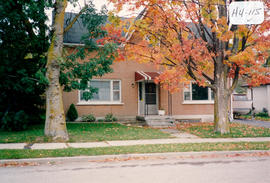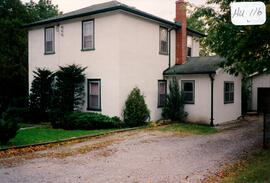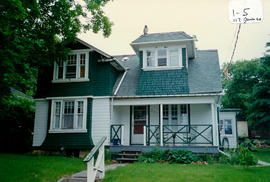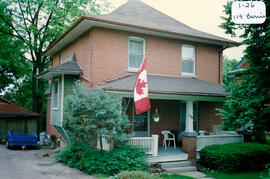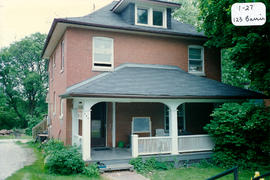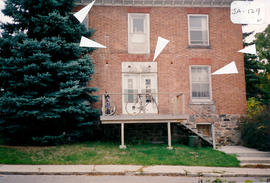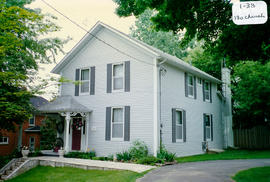- CA BWGPL GJ-HB-2017-03-22-13
- Item
- 1995
Part of George Jackson fonds
The house located mid-block at 115 Hurd St. was built around 1920-1940 in the Gothic Revival Cottage style. It was once the home of Aldie Robinson. The Waldruff family lived here years later.
The 1½-storey, three-bay ‘cottage’ has a symmetrical façade, a centre hall plan, a medium-pitched, gable roof and a steeply-pitched, gable dormer. The wide, ground-floor windows indicate twentieth-century construction. The openings are original, but the windows have been replaced more recently. They have cut-stone sills and steel lintels. There is a broad, brick header belt course. Long, narrow bricks which are not a standard shape are used. The house has brick veneer on wood stud construction. This indicates post-1920’s construction. There is a parged, block foundation and a wide, basement window with a window well. The use of a basement for ‘living’ space is a more modern concept related to improvements in waterproofing and insulation technologies. According to the 2000 inventory, this house incorporates modern-day construction materials, techniques, and detailing. It also notes that the entrance door and sidelight, metal awning, and wood porch are recent additions. (1, 3)
George Jackson

